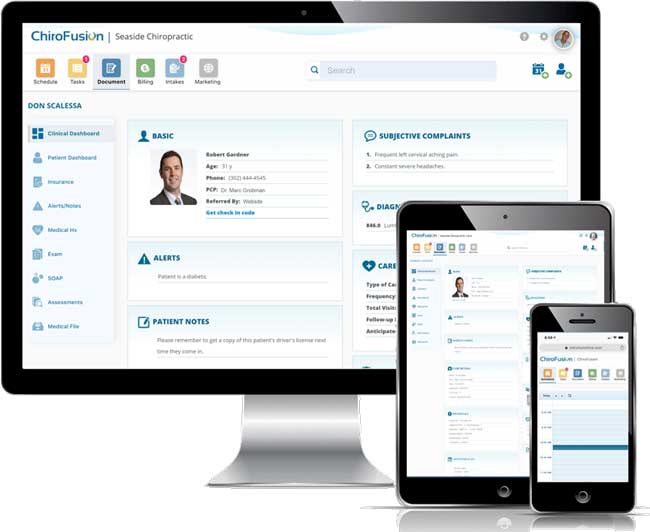1. Understand the Purpose of Chiropractic SOAP Notes
Before we dive into how to write quality SOAP notes, it’s important to understand the purpose of SOAP notes. They are a standardized format for documenting patient care. Chiropractic SOAP notes provide a framework for organizing information about a patient’s condition, treatment, and progress. SOAP notes serve several purposes, including:
- Communicating with other healthcare providers: SOAP notes can be shared with other healthcare providers to ensure continuity of care.
- Documenting patient encounters: SOAP notes provide a written record of each patient encounter, which can be useful in tracking progress and identifying trends.
- Reducing legal risks: SOAP notes can be used as evidence in legal cases to demonstrate that a chiropractor provided appropriate care.
- Improving patient outcomes: SOAP notes can help chiropractors track progress, identify areas for improvement, and adjust treatment plans accordingly.
2. Use Clear and Concise Language
When writing SOAP notes in a chiropractic office setting, it’s important to use clear and concise language. Avoid using medical jargon or complex terminology that may be difficult for patients or other healthcare providers to understand. Instead, use plain language that accurately describes the patient’s condition and treatment. For example, instead of writing “lumbar hyperlordosis,” you could write “excessive curvature of the lower spine.”
3. Include Relevant Information in SOAP Notes
Each section of the SOAP note should include relevant information about the patient’s condition, treatment, and progress. The subjective section should include the patient’s chief complaint, history, and any other subjective information that may be relevant to their condition. The objective section should include objective measures such as range of motion, strength, and any other relevant physical exam findings. The assessment section should include a summary of the patient’s condition, diagnosis, and treatment plan. The plan section should include any changes to the treatment plan, follow-up appointments, and referrals to other healthcare providers.
4. Be Objective
When writing chiropractic SOAP notes, it’s important to be objective. Objective language describes observable facts rather than personal opinions or interpretations. For example, instead of writing “the patient is feeling better,” you could write “the patient reports a decrease in pain from 8/10 to 4/10.” By using objective language, you can provide a clear and accurate picture of the patient’s condition and treatment.
5. Be Thorough. Your SOAP Notes Should be Complete and Accurate
Subjective
The subjective portion of your SOAP notes encompasses the patient’s chief complaint, the history of their current medical condition, and its impact on their daily activities. This historical account entails details such as the onset of the complaint, its location, duration, pain intensity, and whether the discomfort extends to other body parts.
When documenting follow-up visits, record any changes observed since the previous session, including pain scale ratings and self-assessments using the criteria of same, better, or worse. Each assessment should be accompanied by a brief explanation of the patient’s reasoning.
For instance, the patient might express, “The pain has improved compared to last time because I can now sit for longer periods without experiencing discomfort.”
Objective
The objective component of chiropractic SOAP notes aids in quantifying the patient’s subjective remarks. It involves documenting objective findings and any observable changes since their previous visit. Record evidence that indicates whether the patient’s condition has remained the same, improved, or worsened since their last examination.
Follow the Pain, Asymmetry, Range of Motion, and Tissue/Tone changes (PART) documentation method recommended by the Centers for Medicare and Medicaid Services. This approach ensures a comprehensive and objective evaluation of your patient’s present health status and physical mobility.
Assessment
The assessment segment of chiropractic SOAP notes provides an opportunity for you to express your observations regarding the patient’s progress or regression. It allows you to document your recommendations for future treatment outcomes, potential obstacles, or any other pertinent assessments you have made. Additionally, this section serves as a platform to record laboratory or imaging results, as well as any alterations in diagnosis.
Remember, effective communication within the assessment section contributes to the continuity of care and facilitates collaboration with other healthcare providers involved in the patient’s treatment journey. It serves as a vital reference point for future consultations, enabling you and your colleagues to make informed decisions based on a comprehensive understanding of the patient’s progress and evolving needs.
Plan
The concluding section of chiropractic SOAP notes encompasses a comprehensive treatment plan for the patient’s visit. When documenting chiropractic spinal manipulation, it is crucial to specify the regions of the spine that were adjusted during the session.
In addition, it is important to record any ancillary treatments employed, such as transcutaneous electrical nerve stimulation (TENS) or therapeutic ultrasound. This should include detailed information regarding the treatment location, targeted muscle groups, sets, repetitions, unit time, and/or total duration. By documenting these aspects, you provide a thorough account of the specific interventions used to enhance the patient’s well-being.
Furthermore, it is essential to include any changes made to the treatment plan during the visit. This could involve modifications to the frequency or intensity of treatments or adjustments based on the patient’s progress or response to therapy. Additionally, it is important to make a note if the patient was discharged after the session, indicating the conclusion of their treatment for the time being.
6. Use Chiropractic SOAP Note Templates
Using SOAP note templates can help ensure that you include all necessary information and follow a standardized format. Templates can also save time and increase efficiency. Many chiropractic EHR software systems include SOAP note templates that can be customized to fit a chiropractor’s specific needs. Electronic health records software can also help to reduce documentation errors and improve patient care and outcomes.
7. Keep HIPAA in Mind
HIPAA (Health Insurance Portability and Accountability Act) is a federal law that protects the privacy and security of patients’ health information. It’s extremely important for chiropractors to keep HIPAA in mind when writing SOAP notes. Chiropractic practices often consist of sole practitioner offices, with a handful of support staff, making it difficult to scale HIPAA requirements, generally meant for larger healthcare organizations. Make sure to only include information that is relevant to the patient’s care and treatment. Avoid including any sensitive information, such as social security numbers or financial data.
8. Follow Professional Guidelines
Chiropractic SOAP notes should follow professional guidelines and best practices, such as those established by the American Chiropractic Association (ACA), the International Chiropractors Association and the Centers for Medicare and Medicaid Services. These guidelines may vary depending on the specific organization, so be sure to
Conclusion
In conclusion, electronic SOAP notes offer numerous benefits for chiropractors and their patients. By using Chiropractic SOAP notes software, chiropractors can provide better care for their patients, run their practices more effectively, and improve the overall patient care experience. With the convenience and efficiency offered by electronic SOAP notes, it is no wonder that more and more chiropractors are making the switch from traditional paper-based documentation. If you are a chiropractor looking to improve the documentation process and provide better care for your patients, consider switching to electronic SOAP notes today.
Chiropractic SOAP Notes Made Easy with ChiroFusion
Better chiropractic SOAP notes are the cornerstone of ChiroFusion. Our easy-to-use, integrated EHR practice management software for chiropractors simplifies the task of creating compliant SOAP notes for your practice. Our customizable macros and built-in automations allow you to complete compliant chiropractic SOAP notes in seconds so you can spend more time caring for your patients and doing the things you love outside of the office.
View a free software demo today to discover how ChiroFusion can help you to better manage your practice using our SOAP note templates and integrated automations.

